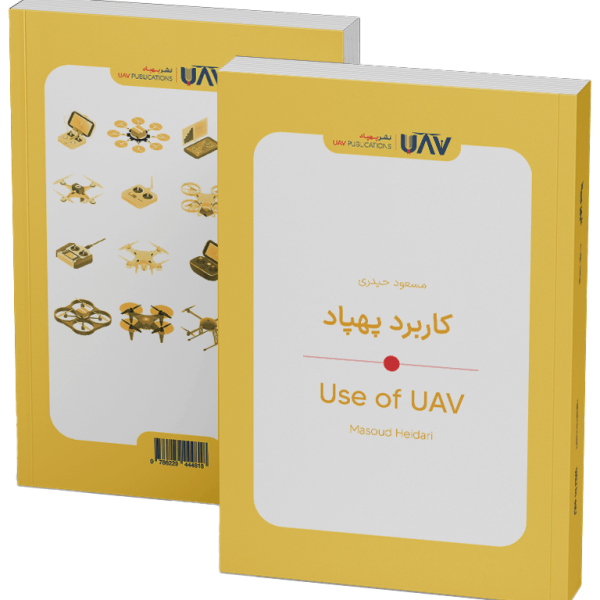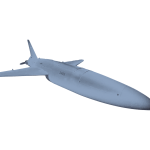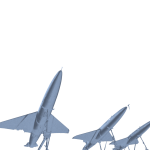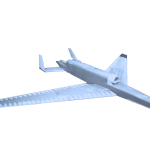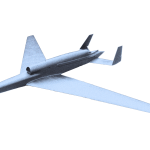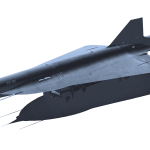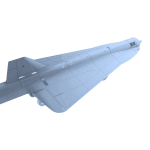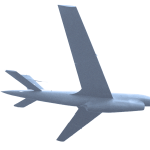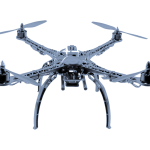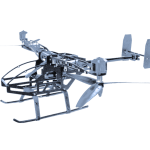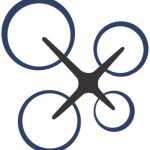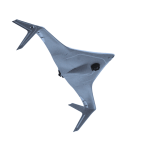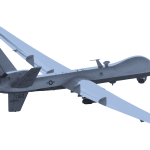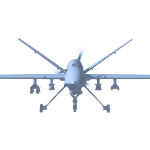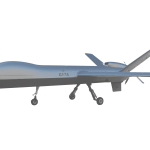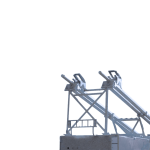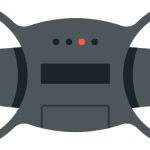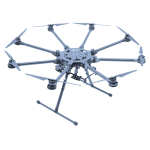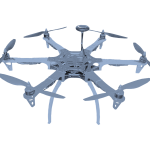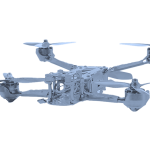Book – What Is UAV?
“What Is UAV?”, written by Masoud Heidari, serves as a bridge between cutting-edge technology and human-centered storytelling. With a simple, narrative-driven approach, the book makes complex drone-related concepts accessible to everyone, from curious teenagers to parents eager to pass on practical knowledge to their children. Spanning the history and structure of drones to their diverse roles in everyday life, this work introduces readers to a world where drones are not merely technical devices, but also rescuers, farmers, filmmakers, and guardians of the environment.
If you’re looking for a unique and engaging book about the fascinating world of intelligent unmanned aerial vehicles, What Is UAV? It is a bright and delightful choice.
An Introduction to the Book “What Is UAV?”
The book What Is UAV? Offers a narrative-driven, accessible introduction to the world of unmanned aerial vehicles (UAVs). Unlike many technical or specialized resources, this book presents complex drone-related concepts in a friendly, story-based manner that appeals to a broad audience—from general enthusiasts to curious teenagers, and even parents seeking to explain modern technology in simple terms to their children.
Covering topics from the history and structure of drones to their operations, applications, fuel sources, designs, and the future of the technology, the book’s approachable tone and relatable examples distinguish it from traditional technical manuals. Its unique charm lies in the fictional dialogue between an engineer father and his inquisitive daughter, whose childlike curiosity infuses the narrative with warmth and dynamism.
What Is UAV?
The word “drone” in Persian is correctly derived from the acronym “remotely piloted aircraft,” referring to an unmanned aerial vehicle (UAV) that is controlled remotely or programmed to fly autonomously. While colloquial terms such as “Pahbad” or “Pahpat” are sometimes used, “Pahpad” is the accurate term. Drones vary in size, capabilities, and technology depending on their intended purpose. They can perform tasks ranging from mapping and environmental monitoring to search and rescue operations, agriculture, cargo delivery, and even scientific exploration in space. Their value lies in their ability to undertake dangerous or logistically complex missions that would be too costly—or even impossible—for humans to undertake.
Why Were Drones Created?
The concept of unmanned flight dates back to the 19th Century. In 1849, the Austrian military attempted to use explosive-laden balloons against the city of Venice. Although these early devices were not controllable and the mission failed, the idea planted the seeds for modern UAVs. In the 20th Century, especially with advancements in aviation, drones were initially developed as target practice tools for gunners.
Over time, they evolved into reconnaissance and imaging tools for inaccessible or high-risk areas. The fundamental motivation behind drone development was to perform vital tasks while safeguarding human life.
Drones in the 20th Century
With the rise of modern warfare and the need for accurate intelligence from remote or occupied territories, drones entered a new phase of development. By the 1960s and 70s, countries like the United States developed reconnaissance UAVs capable of flying autonomously, collecting data, and returning safely. Although their initial use was military, drone technology gradually entered civilian sectors. Lighter, brighter, and more efficient designs made them suitable for applications such as disaster relief, scientific research, logistics, and precision agriculture.
Not All Drones Are the Same
Drones generally fall into two major categories based on their design and flight mechanism:
- Fixed-wing drones resemble airplanes.
- Multirotors, such as quadcopters, which use multiple rotors for lift, are similar to helicopters.
Each type has its strengths and limitations. Fixed-wing drones offer longer flight durations and are ideal for covering large areas, while multirotors provide vertical takeoff and hovering capabilities, making them suited for precision missions. Additionally, hybrid models have been developed, combining features from both categories for versatile performance.
How Do Multirotors Work?
Multirotor drones utilize multiple motors and propellers. The most common configuration is the quadcopter, with four rotors. The rotational direction of each rotor is designed to maintain stability and prevent unwanted spinning.
Due to their ease of control, affordability, and maneuverability in confined spaces, multirotors are widely used in urban applications, rescue missions, and aerial imaging. Quadcopters can carry small payloads, such as cameras or medical supplies, and hover precisely over target locations.
What Powers a Drone?
A key question about drones is: Where does their energy come from? The answer depends on the model. Drones can be powered by rechargeable batteries, liquid fuels (such as gasoline), gases (like hydrogen), or even solar energy.
Lightweight models, such as quadcopters, typically use batteries—favored for their simplicity and portability — but are limited in flight duration. Larger drones may utilize combustion engines for increased power, albeit at the expense of weight and emissions. Emerging technologies, such as hydrogen fuel cells and solar panels, are enabling cleaner, longer flights, although they still face challenges in terms of cost and technical complexity.
What’s Inside a Drone?
Regardless of type or size, every drone consists of key components, typically divided into:
Structural components: body, wings or propellers, motors, landing gear, payload bays, and energy systems (battery or fuel tank).
Electronic components:
- Flight controller board – the brain managing motion and stability.
- Transmitter/receiver – for ground communication.
- GPS module – for positioning.
- Sensors – including gyroscopes, compasses, and altimeters.
- Advanced payloads include thermal cameras, multispectral sensors, spotlights, and loudspeakers.
The selection and configuration of components vary significantly depending on the drone’s intended mission, whether it is rescue, research, or reconnaissance.
From Rescue Missions to the Red Planet
Drones are no longer bound to Earth. A prime example is NASA’s Ingenuity, a small helicopter that successfully flew on Mars in 2021. This historic flight proved that UAVs can function in extraterrestrial environments. Ingenuity not only sent back detailed imagery but also explored areas inaccessible to traditional rovers.
On Earth, drones are invaluable in disaster relief, natural hazard assessment, environmental monitoring, and life-saving operations. In short, drones have transcended both geographic and imaginative boundaries.
Drones That Save Lives
In emergencies, time is critical. Seconds lost can cost lives. Drones act as airborne first responders, able to reach disaster zones at any time, day or night, without reliance on roads or light. Equipped with thermal cameras and precise sensors, they can locate missing persons, relay live data to ground teams, and deliver first aid supplies, medication, or communication devices. Their use not only enhances speed and accuracy but also reduces risks to human responders and enables access to hard-to-reach areas.
Drones in Everyday Life
Drone use is no longer limited to emergency scenarios. Today, they serve in a multitude of industries, from smart agriculture and filmmaking to cartography, industrial inspection, meteorology, wildlife monitoring, urban delivery, and even advertising. In agriculture, drones are used for spraying, crop monitoring, soil analysis, and precision seeding. In the power industry, they inspect transmission lines and towers safely and efficiently. In media, they’ve revolutionized aerial cinematography. New applications emerge daily, underscoring the vital role these flying machines play. A companion book,
What Can Quadcopters Do?
Quadcopters, or four-rotor UAVs, are the most popular type of multirotors thanks to their simple design, high maneuverability, low cost, and suitability for tight spaces. They’re widely used for:
- Aerial photography and cinematography.
- Urban traffic monitoring and law enforcement.
- Light package delivery (in some countries).
- Search missions in urban or mountainous areas.
- Educational programs for flight and control training.
- They also serve as popular hobby devices in households and are ideal platforms for enthusiasts exploring the world of drone technology.
Counter-Drone Technologies
With the widespread adoption of drones, concerns have arisen over security, privacy, and potential threats. As a result, counter-drone technologies have become a vital part of the aerospace and defense sectors. These technologies include:
- Detection via radar, radio frequencies, thermal, or acoustic signals.
- Signal jamming to disrupt radio communication.
- Software intrusion to override control systems.
- Net capture systems to trap drones.
- Physical interception using specialized UAVs or trained birds.
- In high-risk scenarios, laser or missile systems are employed.
These countermeasures are crucial for securing sensitive sites, including airports, government facilities, and significant public events.
The Future Takes Flight
The future of drones surpasses current imagination. With continued advancements in AI, telecommunications, clean energy, and robotics, drones are becoming increasingly intelligent, secure, and efficient. Shortly, they are expected to become an integral part of urban infrastructure—delivering packages, monitoring environmental changes, managing emergencies, assisting older people, and even transporting passengers over short distances.
In underdeveloped or disaster-affected regions, drones may open new pathways to essential services. With the advent of 5G networks, autonomous drone swarms will work in harmony as intelligent systems to carry out complex missions.
If Saint-Exupéry Had a Drone…
The book What Is UAV? Touches on the story The Little Prince by Antoine de Saint-Exupéry—a pilot who tragically died on a reconnaissance flight during World War II. In this poetic reflection, a child asks: If Saint-Exupéry had used a drone instead of a manned aircraft, might he have survived to write more stories? Could a drone have seen the Little Prince and spoken with him?
This simple yet profound question reminds us: no matter how advanced technology becomes, it cannot replace the human spirit. Drones are tools—extensions of human intelligence and skill. When guided ethically, they can preserve life, offer hope, and perhaps one day, record the distant whisper of a rose in bloom.
Drones: The Eyes and Hands of Humanity in the Sky
Drones are no longer mere instruments—they are embedded in the fabric of our present and future. Whether saving lives, mapping the Martian surface, or helping us understand our environment, their potential is vast. As beautifully depicted in What Is UAV?, any technology, when used responsibly, becomes a servant to humanity. In their civilian applications, drones enable us to see more clearly, make more informed decisions, and act more swiftly.
They are the intelligent eyes of a pilotless bird—flying through the skies, guided by human hands, making our world safer, more efficient, and more humane.
Book Image Gallery
| Book Author | |
|---|---|
| Book Isbn |
978-622-94448-0-1 |
| Book Language | |
| Book Pages |
95 |
| Book Publisher | |
| Book Publish Year |


